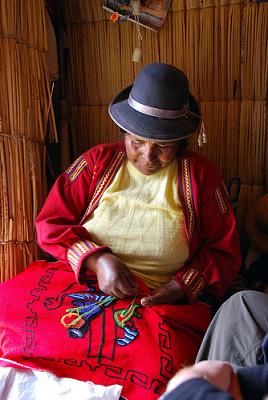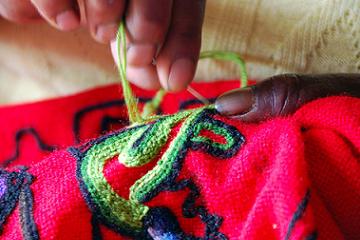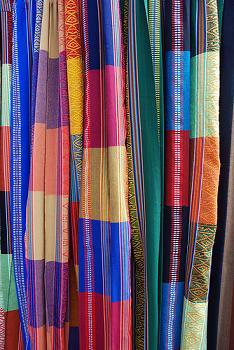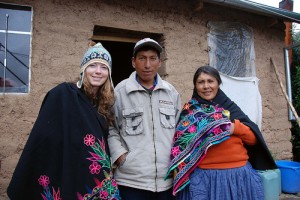Opt for antique.
Before the advent of high-tech machinery and mass-production, fabrics were made by hand.
Today, even in Third World countries, the textiles you most often see on sale will be machine-made and replicated around town.
If you want a one-off blanket, shawl or rug, antique is often the way to go, even if it means a bit of extra digging.
A souvenir vendor on a La Paz side street might be selling the usual Bolivian mementos at the door, but ask inside and they might have some blankets sourced from a rural Quechua community.

An Uros Islander stitches a blanket
Third World countries are your best bet for readily available and reasonably priced antique stock – capitalism tends to breed throwaway societies where only the best is kept… and then probably in a museum.



